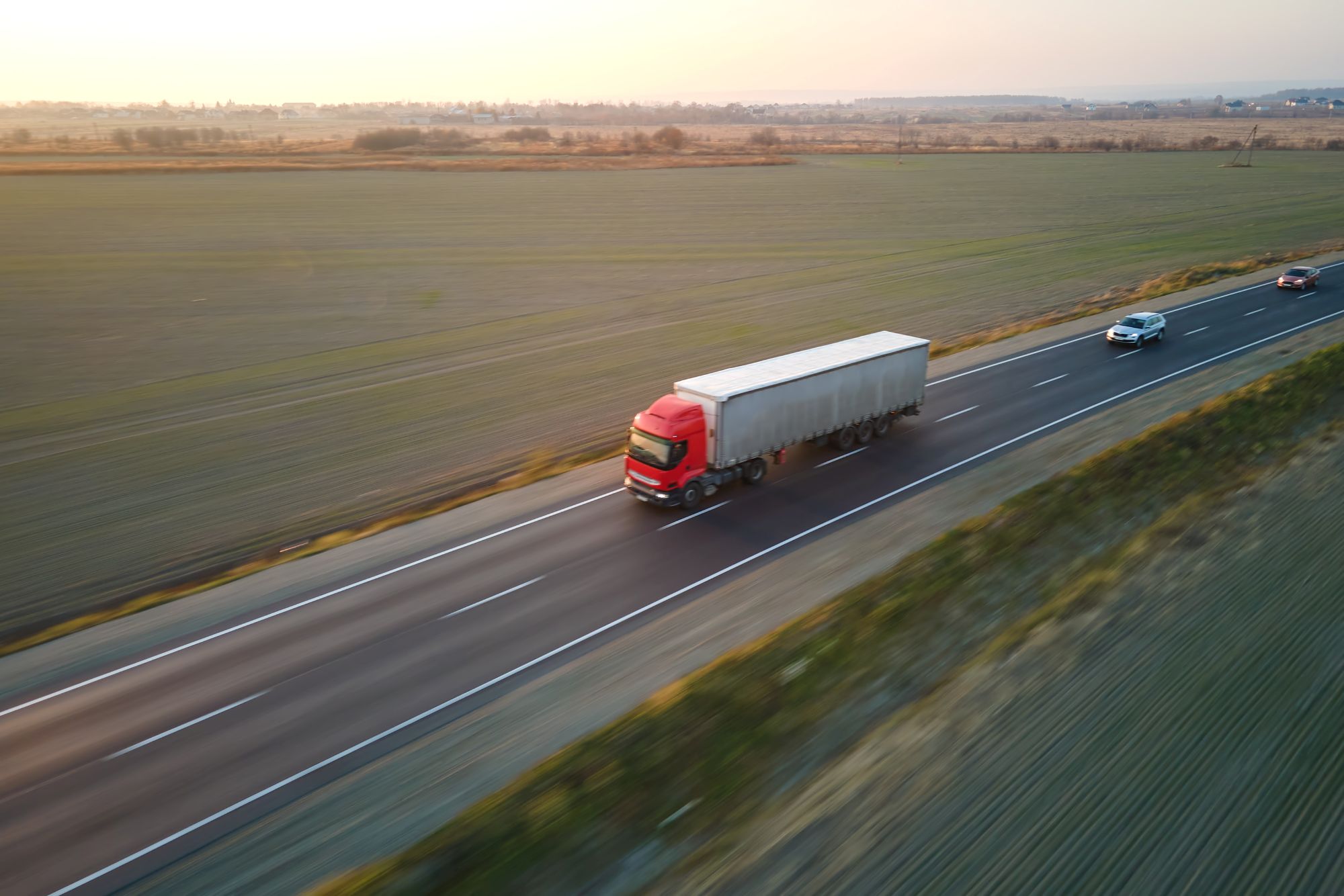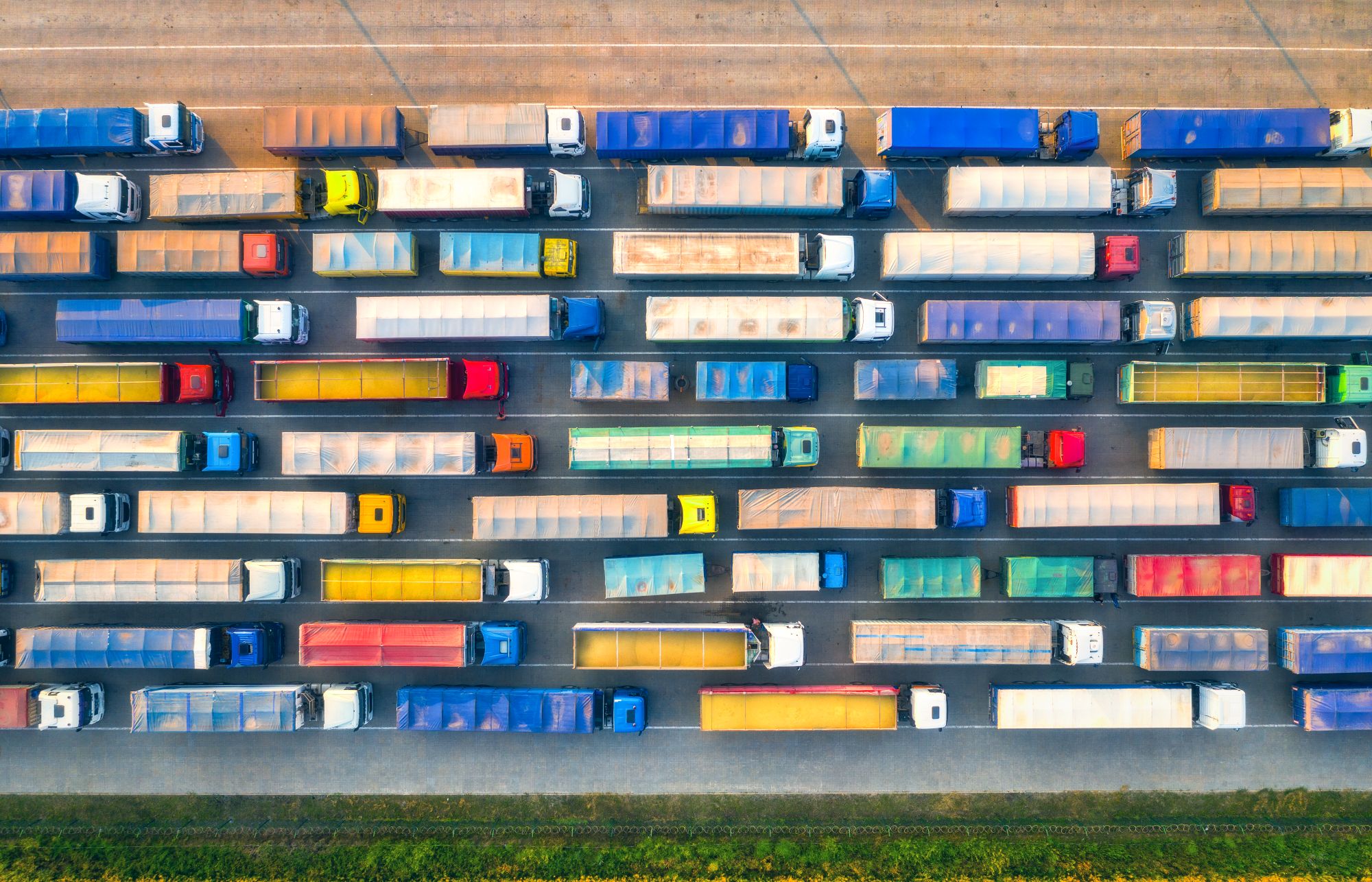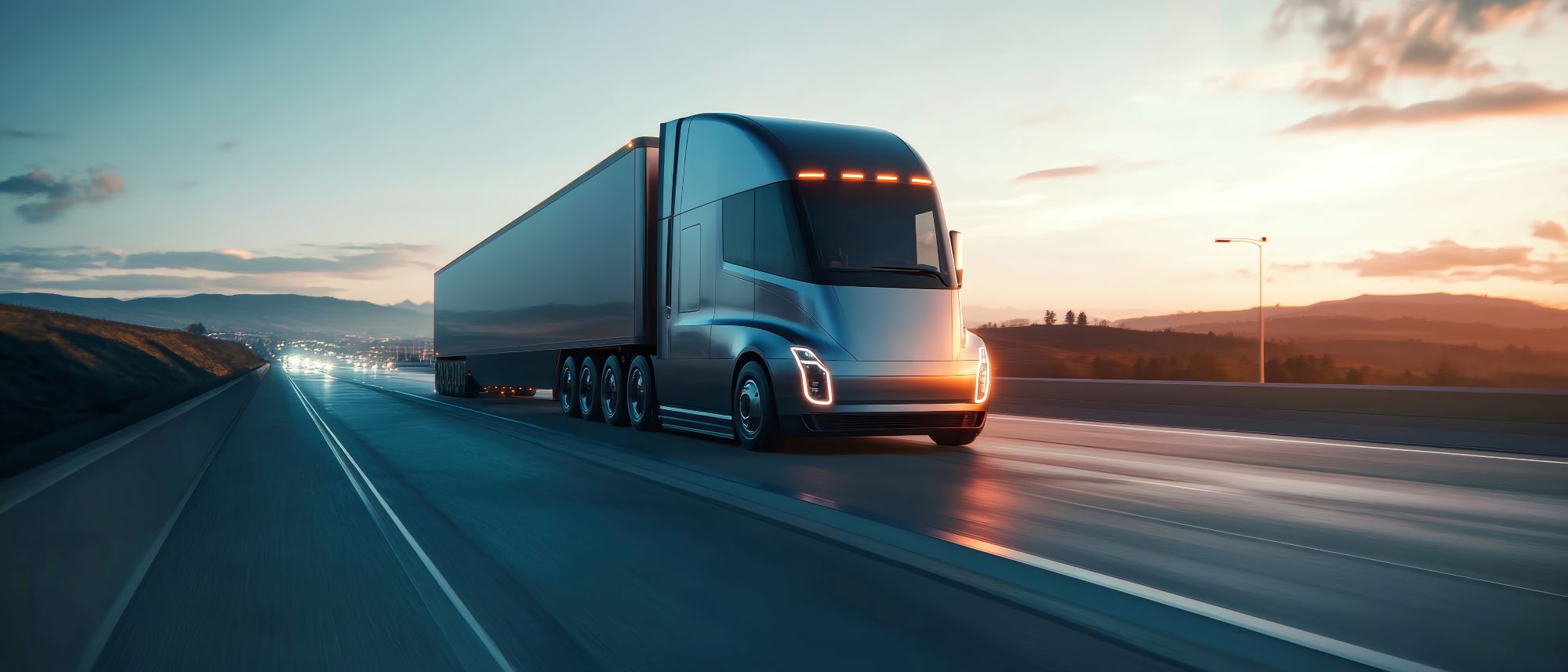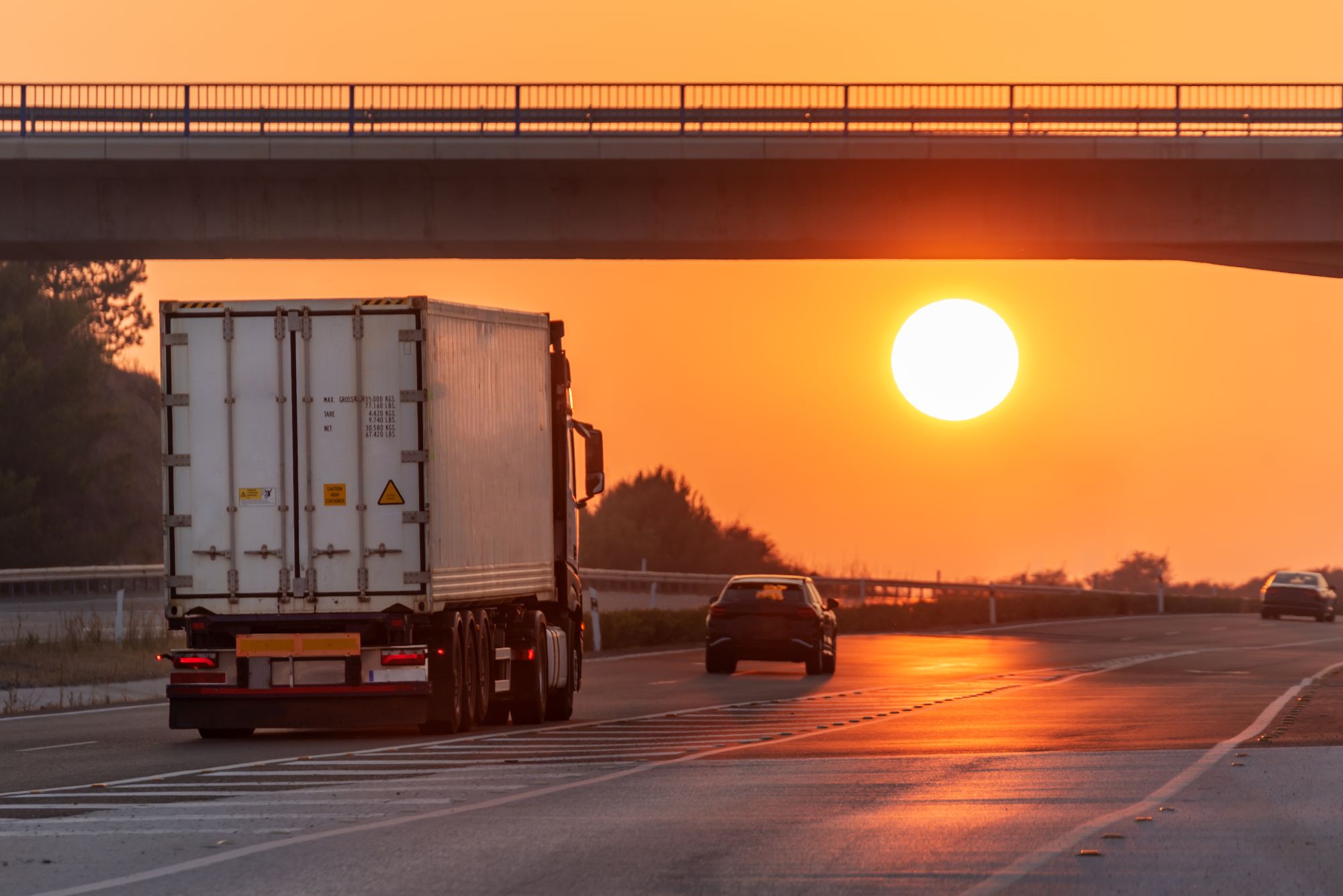
Guest
9 Wege, wie KI-Erkennung die Flottenindustrie verändert
Erstellt: 03.11.2025
•
Aktualisiert: 04.11.2025
Künstliche Intelligenz (KI) hat die Herangehensweise von Fuhrparkexperten an den täglichen Betrieb neu definiert. Moderne Technologien ermöglichen es Managern, Wartung, Sicherheit und Compliance ihrer Fahrzeuge messbar zu verbessern. Angesichts des zunehmenden Drucks durch die Gesetzgebung werden KI-gestützte Erkenntnisse immer wichtiger, um einen entscheidenden Vorteil zu erlangen. Hier sind neun Möglichkeiten, wie KI-Erkennung die Fuhrparkbranche verändert.
1. Überwachung des Fahrerverhaltens
Fortschrittliche Telematik und Algorithmen des maschinellen Lernens (ML) helfen bei der Erkennung von KI in Fuhrparks, indem sie das Fahrerverhalten überwachen. Diese Geräte analysieren Echtzeitmuster und zeigen riskantes Fahrverhalten wie Geschwindigkeitsüberschreitungen und starkes Bremsen an. ML-Modelle verarbeiten sofort Daten von fahrzeuginternen Sensoren und erkennen Abweichungen von sicheren Fahrnormen und Unternehmensrichtlinien.
Die Fahrer erhalten sofortiges Feedback im Fahrzeug, während die Flottenmanager detaillierte Berichte über Trends erhalten. Die Fülle an Informationen hilft den Vorgesetzten, Coaching-Sitzungen zu personalisieren und spezifische Verbesserungsbereiche zu finden. Telematiklösungen sind für Fuhrparks landesweit von entscheidender Bedeutung, weil sie durch verbessertes Verhalten und Schulungsprogramme Unfälle und Verletzungen reduzieren (https://www.crowncommercial.gov.uk/agreements/RM6315).
2. Optimierung der Routen
KI-Algorithmen sind für die Analyse von Echtzeit-Verkehrsdaten, wie Straßensperrungen und Wetterbedingungen, unerlässlich. Staus können erheblich sein, insbesondere wenn Ihre Routen durch London führen. Ein Inrix-Bericht aus dem Jahr 2024 besagt, dass Autofahrer [101 Stunden Verspätung] (https://inrix.com/scorecard/) auf ihren Fahrten durch die Hauptstadt erlebten. ML-Modelle können Engpässe und schlechtes Wetter schnell erkennen, um kritische Lieferzeiten einzuhalten.
Flottenmanager profitieren, weil ihre Fahrer die Pünktlichkeit verbessern können. Durch die Optimierung der Routen ist es wahrscheinlicher, dass die Lieferungen innerhalb der geplanten Zeitfenster ankommen. Sie verbessert auch das Verhalten der Fahrer, indem sie weniger Leerlauf haben und weniger Kilometer zurücklegen. Moderne KI-Technologien erkennen schnell Straßensperrungen und unerwartete Wetteränderungen, um Störungen zu minimieren.
3. Automatisierung der Compliance-Berichterstattung
Die Berichterstattung über Unfälle umfasste früher manuelle Protokolle und Dokumentationen. KI kann jedoch den Arbeitsaufwand verringern, indem sie Vorfälle automatisch erkennt und meldet. Von Kollisionen bis zu Beinaheunfällen können diese Technologien potenzielle Vorfälle erkennen. Sensoren sammeln relevante Informationen zum Zeitpunkt des Ereignisses, um mehr Kontext zu liefern. Ungewöhnliche Umstände wie die Auslösung eines Airbags können ebenfalls in die automatische Berichterstattung einbezogen werden.
Sobald die KI-Erkennung abgeschlossen ist, stellt das System die Informationen in einem standardisierten Bericht zusammen. Manuelle Protokolle können zeitaufwändige Aufgaben verursachen, so dass KI diese Prozesse automatisieren und Personal freisetzen kann. Flottenmanager und Versicherer erhalten den Bericht und können so die Einhaltung der Vorschriften und eine genaue Kommunikation sicherstellen. Fortschrittliche Technologien erfassen relevante Daten und verwenden eine einheitliche Formatierung, so dass alle Beteiligten die entscheidenden Details erhalten.
4. Verbesserung der vorausschauenden Wartung
Unerwartete Fahrzeugausfälle können den Zeitplan durcheinander bringen und die Auslieferung verzögern. KI hilft Fuhrparkmanagern, diese Probleme zu erkennen, bevor sie zu großen Problemen werden. Von der Motortemperatur bis zum Öldruck werden alle Merkmale in Echtzeit überwacht. Hochentwickelte Algorithmen erkennen subtile Anomalien und warnen den Fahrer, wenn eine Komponente kurz vor dem Ausfall steht.
Feste Wartungsintervalle können zwar vorteilhaft sein, aber mit KI können Sie proaktiver vorgehen und die Wartung genau planen. Reifendrucksensoren sind ein hervorragendes Beispiel, insbesondere für Bau- und Versorgungsunternehmen. Experten sagen, dass Luftkompressoren 25 % mehr CFM liefern sollten, als die Geräte benötigen, um die besten Praktiken aufrechtzuerhalten. Diese Sensoren überwachen kontinuierlich die Leistung und erkennen einen allmählichen Leistungsabfall, was ein frühes Anzeichen für Lecks ist.

5. Analyse des Kraftstoffverbrauchs
Die KI-Erkennung in Flotten geht über die Untersuchung des Fahrerverhaltens hinaus. Telematik und Sensoren analysieren Geschwindigkeits- und Beschleunigungsmuster, um den Kraftstoffverbrauch besser zu verstehen. Die Systeme überwachen Ihre Fahrzeuge auf übermäßigen Leerlauf und ineffiziente Streckenführung, die den Benzin- oder Dieselverbrauch erhöht. Die KI kann den Fahrern maßgeschneiderte Empfehlungen geben, indem sie optimierte Geschwindigkeitsbereiche oder Wartungsanforderungen vorschlägt.
Flottenmanager profitieren davon, dass sie aggregierte Daten über den Kraftstoffverbrauch und die Ausgaben erhalten. Diese Informationen helfen ihnen, fundiertere Entscheidungen bei der Fahrzeugbeschaffung und Routenplanung zu treffen. Wenn ältere Fahrzeuge ineffizient sind, könnte es an der Zeit sein, den Fuhrpark aufzurüsten. Logistikexperten sollten einzelne Fahrzeuge mit Branchenstandards vergleichen, um Ausreißer zu erkennen.
6. Verringerung der Emissionen
Zu den Umweltzielen Großbritanniens [gehört das Erreichen von Netto-Null-Emissionen] (https://commonslibrary.parliament.uk/research-briefings/cbp-9888/) bis 2050. Daher müssen sich Flottenmanager der strengeren Normen und des Risikos von Bußgeldern stärker bewusst sein. Die KI-Erkennung hilft Fahrzeugen durch Sensoren und Onboard-Diagnosesysteme, die während des Betriebs Daten sammeln. ML-Algorithmen erkennen Muster und Anomalien in den Daten und melden übermäßige Emissionen.
KI kann Flottenmanager warnen und eine proaktive Wartung ermöglichen, wenn ein Fahrzeug Emissionsgrenzwerte überschreitet. Während der Mensch Maßnahmen zur Reduzierung von Treibhausgasen ergreift, wird die KI-Erkennung immer wichtiger für die Transportindustrie. Eine Studie aus dem Jahr 2025 besagt, dass [Deep Reinforcement Learning die Emissionsreduzierung maximiert] (https://news.mit.edu/2025/eco-driving-measures-could-significantly-reduce-vehicle-emissions-0807), indem es die Fähigkeiten des umweltfreundlichen Fahrens anpasst. Die US-Forscher erklärten, dass die Implementierung dieser Technologie in 10 % der Fahrzeuge die Kohlenstoffemissionen um bis zu 50 % reduzieren würde.
7. Umstellung auf Elektrofahrzeuge
Eine weitere Möglichkeit für Flottenmanager, Emissionen zu reduzieren, ist die Umrüstung auf Elektrofahrzeuge. Der Besitz von Elektrofahrzeugen nimmt landesweit zu, sowohl bei Privatfahrern als auch bei Flottenbesitzern. Ein Bericht aus dem Jahr 2025 [zeigt einen Anstieg von 38,9 % im Vergleich zum Vorjahr] (https://www.smmt.co.uk/more-than-a-million-evs-on-uk-roads-as-vehicle-ownership-reaches-new-high/) ab 2023. KI kann Logistikexperten bei der Umstellung unterstützen, indem sie ihnen empfiehlt, wann, wo und wie sie ihre Flotten elektrifizieren sollten.
Wer zum ersten Mal ein Elektroauto fährt, braucht möglicherweise Hilfe bei der Wahl der Ladefenster und der benötigten Infrastruktur. KI-gestützte Systeme erkennen, wann und wo Elektroautos auf natürliche Weise mit den Ladezeiten in Einklang gebracht werden können. So könnten sie beispielsweise die besten Ladezeiten empfehlen, um Störungen im Fahrplan zu vermeiden. Einige denken vielleicht über den Umstieg auf Elektroautos nach, so dass Logistikmanager KI nutzen können, um Kostendaten zwischen Elektro- und Benzinfahrzeugen zu vergleichen.
8. Die Kosten senken
Die Investition in KI kann zwar eine Hürde darstellen, sich aber auf lange Sicht finanziell auszahlen. Diese Softwareoptionen[ senken die Kosten, indem sie die Ausfallzeiten minimieren] (https://renovated.com/construction-fleet-management-software/), die den täglichen Betrieb verlangsamen. Die frühzeitige Erkennung von Problemen kann zu einer besser gewarteten Flotte führen, was wiederum die Betriebszeit und den Umsatz erhöht. Flottenmanager können außerdem durch eine verbesserte Routenoptimierung und Kraftstoffverwaltung Geld sparen.
Die KI-Erkennung in Flotten ist für die Rationalisierung von Verwaltungsabläufen unerlässlich. Diese Technologien können automatisch Compliance-Prüfungen und die Dokumentation von Vorfällen durchführen und so den Bedarf an manueller Schreibarbeit verringern. Ihre Mitarbeiter können sich mehr auf das große Ganze und weniger auf den Verwaltungsaufwand konzentrieren. Wenn die Überwachung Ihren Fahrern hilft, könnte sie die Kosten für Fahrzeugreparaturen und Rechtsansprüche senken.
9. Verfolgung von Vermögenswerten
Fahrzeug- und Frachtdiebstähle [sind in Großbritannien] (https://www.ons.gov.uk/peoplepopulationandcommunity/crimeandjustice/datasets/crimeinenglandandwalesappendixtables). stetig zurückgegangen, obwohl sie nach wie vor ein großes Problem darstellen. Die KI-Erkennung bietet zusätzliche Sicherheitsebenen, indem sie das Zeitfenster für Diebe verkleinert. Funktionen zur Verfolgung von Vermögenswerten kombinieren GPS- und Telematikfunktionen, um den Standort in Echtzeit zu überwachen, was für Unternehmen, die hochwertige Güter transportieren, unerlässlich ist.
Fuhrparkmanager profitieren von Geofencing-Funktionen, mit denen sie virtuelle Grenzen festlegen können. Wenn ein Lkw oder Transporter diese Zonen verlässt, markieren KI-gesteuerte Systeme automatisch das Ereignis und benachrichtigen die Logistiker. Der Algorithmus ist intelligent genug, um Anomalien und Sicherheitsprotokolle zu erkennen. Anomalien können Sicherheitsmaßnahmen wie die Fernsperrung auslösen.
Nutzung von KI-Erkennung für Kosten und Compliance
Künstliche Intelligenz ist ein praktisches Werkzeug für Flottenmanager, das das Spiel verändert. Mit fortschrittlichen Analysen und Echtzeitüberwachung können Logistikexperten die Sicherheit und Leistung messbar verbessern. Die Technologien entwickeln sich zwar weiter, aber die Zukunft ist schon da. Ihr Unternehmen sollte bereit sein, in KI-gesteuerte Lösungen zu investieren, um Kosten zu senken und Risiken zu minimieren.
 Entdecken Sie mehr von Renovated Magazine.
Entdecken Sie mehr von Renovated Magazine.



